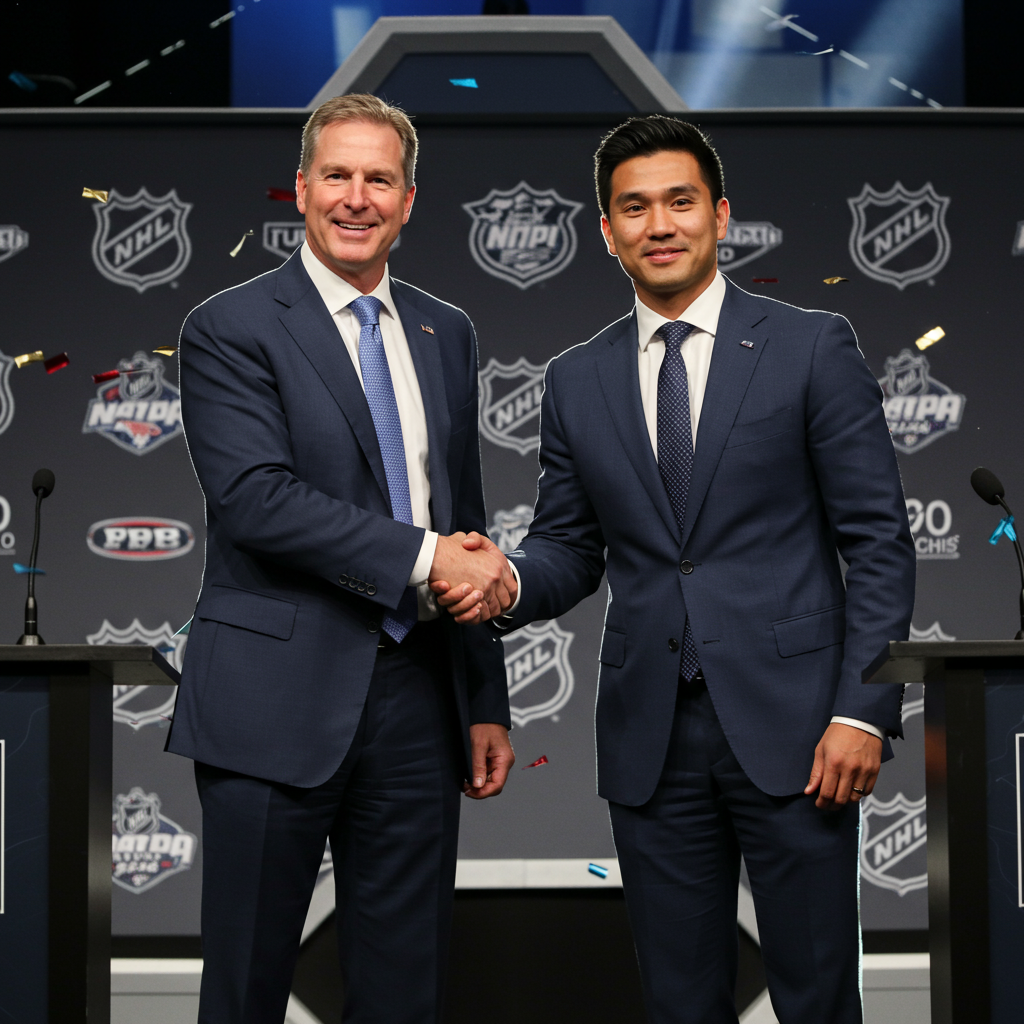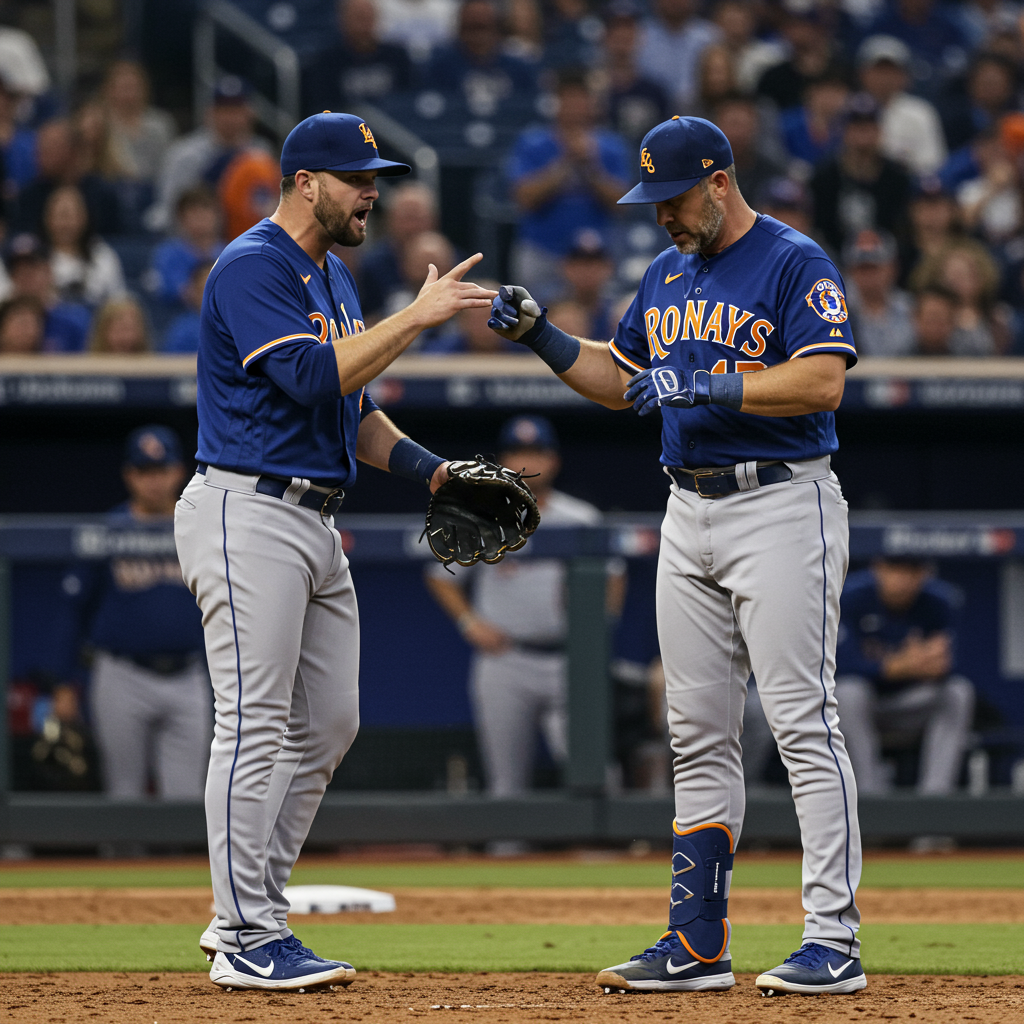Major news from the National Hockey league: the league and the NHL players‘ Association (NHLPA) have reached a landmark agreement in principle for a four-year extension to their Collective Bargaining Agreement (CBA). This pivotal deal, pending ratification votes from both sides, promises labor peace in the sport through the conclusion of the 2029-30 season. Announced more than a year before the current agreement’s expiry, this extension signals a new era of stability and collaboration between the league and its players.
Landmark Deal Extends NHL Labor Peace
The announcement came during a press conference held in Los Angeles on Friday, June 27, 2025, just hours before the start of the 2025 Upper Deck NHL Draft. NHL Commissioner Gary Bettman, Deputy Commissioner Bill Daly, NHLPA Executive Director Marty Walsh, and Assistant Executive Director Ron Hainsey shared details of the agreement. The current CBA, initially signed in 2013 and extended in 2020, is set to expire on September 15, 2026. The newly agreed-upon extension will seamlessly take effect the following day, September 16, 2026, and run through September 15, 2030. This proactive approach marks one of the earliest extensions finalized during Commissioner Bettman’s tenure, preventing the potential for disruptive negotiations as the current deal nears its end.
Commissioner Bettman highlighted the positive impact of the early extension. “It gives everybody a sense of stability, a sense of certainty, a sense of optimism,” Bettman stated, referring to the benefits for team construction, player contracts, and relationships with business partners like media and sponsors. He emphasized that this stability is expected to “continue to fuel the growth that we’ve seen” in the sport.
A New Era of Collaboration?
Both Bettman and NHLPA Executive Director Marty Walsh characterized the negotiation process as remarkably constructive and collaborative, a stark contrast to contentious labor disputes that led to lockouts in previous decades, including the full-season shutdown in 2004-05. Walsh, who took the helm of the NHLPA in 2023, noted that discussions began early in his tenure, coinciding with talks about exciting international hockey events like the 4 Nations Face-Off, the Olympics, and the World Cup.
“Didn’t agree on everything, but no major blowouts in the room,” Walsh remarked, describing the dialogue as “very open.” He added that they were able to find “good resolutions” even on complicated issues through mutual respect and understanding. Commissioner Bettman particularly praised the relationship he has developed with Walsh, calling it “incredibly positive for the game, for the players and for the business of the game.” This improved rapport is seen as a key factor in reaching such a significant agreement well ahead of schedule.
The swiftness and positive tone of these negotiations suggest a potential shift towards a more harmonious relationship between the league and its players, prioritizing continued growth and stability over adversarial bargaining.
What the New CBA Means: Financial Stability and Key Adjustments
While full specifics require ratification, the core financial structure of the Collective Bargaining Agreement reportedly remains largely unchanged. The foundational 50-50 split of Hockey Related Revenue (HRR) between owners and players, established in 2013, will continue. The NHL salary cap will also remain tied to this revenue split, ensuring a direct correlation between league prosperity and player compensation parameters. NHLPA Assistant Executive Director Ron Hainsey acknowledged the long-standing reality of the salary cap, which has been a fixture in the league for 20 years. This consistent financial framework is seen by the league as crucial for maintaining “extraordinary competitive balance.”
However, the extension does introduce several notable operational and structural adjustments, according to multiple media reports summarized from external sources. These changes aim to refine the league’s operations, player compensation rules, and competitive landscape.
Reported Changes Coming with the Extension (Starting 2026-27 Season):
The agreement is expected to usher in several specific changes designed to enhance the league and address particular aspects of the game:
Increased Regular Season: The regular season schedule is anticipated to expand from the current 82 games per team to 84 games per team. This change, reportedly beginning in the 2026-27 season, would increase the total number of league games and potentially allow for more intra-division contests and ensure every team visits every other team’s arena annually.
Reduced Preseason: To accommodate the longer regular season, the preseason schedule will be shortened from six games per team to four. Players with significant NHL experience (reportedly 100+ career games) may be limited to participating in a maximum of two preseason contests.
Player Contract Term Limits: Maximum contract lengths are expected to be reduced by one year. Players re-signing with their current club would be limited to seven-year deals (down from eight), while players signing with a new team as unrestricted free agents could sign for a maximum of six years (down from seven). This aims to potentially affect the long-term landscape of team rosters.
Playoff Salary Cap Compliance: A significant reported change involves requiring teams to be salary cap compliant during the Stanley Cup Playoffs, starting September 2026. This rule is designed to prevent teams from exploiting the Long-Term Injured Reserve (LTIR) mechanism to effectively exceed the salary cap during the postseason, a strategy seen in recent successful playoff runs by teams like Tampa Bay and Vegas. The specific mechanism for implementing this playoff cap compliance will reportedly be detailed later.
- Other Adjustments: Additional reported changes include capping player signing bonuses at 60% of total contract value, prohibiting deferred salaries, increasing the player playoff bonus fund, requiring each team to employ a full-time emergency backup goalie (EBUG), making neck guards mandatory for players entering the league starting in 2026-27 (with a grandfather clause for existing players), and eliminating the mandatory game-day arena dress code for players. Player rights for drafted players will reportedly be retained until age 22.
- www.nhl.com
- sports.yahoo.com
- fieldlevelmedia.com
- apnews.com
- www.nhl.com
These reported modifications, especially the playoff salary cap and contract term limits, address areas that have been subjects of discussion and strategic maneuvering under the current agreement.
Ratification and Player Reception
The agreement in principle still requires formal ratification. Deputy Commissioner Bill Daly indicated the League would provide information to its Board of Governors promptly for a response “within the reasonably near future,” followed by a formal vote. NHLPA Executive Director Marty Walsh stated that the players’ association would present the agreement to its full membership in the coming week to allow sufficient time for questions before their formal vote. Walsh expressed optimism that the players would be satisfied with the outcome.
The early agreement provides a degree of certainty for players as well. John Tavares, who recently signed a contract extension with the Toronto Maple Leafs, called the CBA news “great for the game.” He highlighted the value of “predictability” for everyone involved and praised the “collaborative” nature of the current relationship between the league and the players, noting how different it is from past labor tensions. Tavares believes the agreement supports the continued growth of the game across all facets, from international play to the intensity of the Stanley Cup Playoffs.
Ensuring Stability for Future Growth
Reaching a four-year extension so far in advance of the current CBA’s expiration underscores the shared commitment between the NHL and NHLPA to stability and growth. Avoiding protracted and potentially contentious negotiations allows both sides to focus on strategic initiatives, such as international tournaments and continued revenue generation, which directly benefit the league and its players through the HRR split.
This long-term labor peace provides a solid foundation for the NHL’s business operations, broadcasting partnerships, and league expansion considerations over the next decade. For players, it offers clarity on contract structures, salary cap projections (with preliminary figures already reiterated: $95.5M, $104M, and $113M for the next three seasons), and operational rules for years to come. The reported introduction of a playoff salary cap also adds a new layer of strategic consideration for teams building rosters aimed at deep playoff runs.
Frequently Asked Questions
What is the new duration of the NHL Collective Bargaining Agreement?
The new agreement is a four-year extension to the current Collective Bargaining Agreement (CBA). It is set to begin on September 16, 2026, immediately following the expiration of the current deal, and will run through September 15, 2030. This secures labor peace for the NHL for at least the next five seasons from the announcement date.
What are some of the key reported changes in the new NHL CBA extension?
According to media reports based on the agreement, significant changes include increasing the regular season schedule from 82 to 84 games per team (starting 2026-27), reducing the preseason schedule to four games, shortening maximum player contract lengths (7 years for re-signing, 6 years for free agents), and implementing a salary cap compliance requirement specifically for the Stanley Cup Playoffs to address the use of Long-Term Injured Reserve (LTIR). Other items include mandatory neck guards for new players and eliminating the player dress code.
How does this early agreement benefit the NHL and the players?
Reaching an agreement more than a year before the current CBA expires provides significant stability and certainty for both the league and the players. For the NHL, it ensures uninterrupted business operations, broadcasting agreements, and strategic planning. For players, it offers clarity on salary cap projections, contract rules, and league operations for the next several years, avoiding the anxiety and potential disruptions of contentious last-minute negotiations or lockouts, which has historically plagued the sport.
Conclusion
The agreement in principle between the NHL and the NHLPA for a four-year CBA extension through 2030 is a monumental step, securing a prolonged period of labor stability for the league. Announced well ahead of the current agreement’s expiry, this deal reflects an improved relationship between the league and the players’ association. While maintaining the core financial structure based on the 50-50 HRR split and revenue-tied salary cap, the extension reportedly introduces several significant changes, including an 84-game regular season, shorter contract limits, and a crucial playoff salary cap compliance rule. Pending ratification by both the Board of Governors and the players, this agreement sets a stable course for the NHL’s continued growth and success over the next decade.
Word Count Check: 1043




